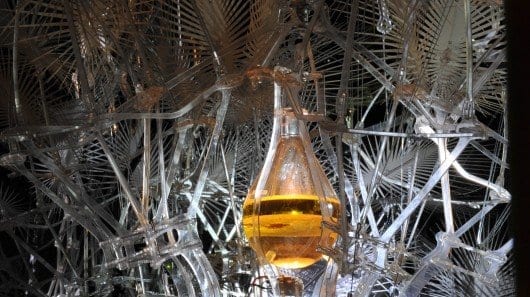
Architects have been looking at ways to improve city buildings with living wallsand living roofs that add some much needed greenery and help remove carbon from the atmosphere.
Now researchers are looking at using a different sort of “living “ material created from protocells – bubbles of oil in an aqueous fluid sensitive to light or different chemicals – to create a coral-like skin that could be used to clad city buildings, build carbon-negative architecture and even “grow” reefs to stabilize the city of Venice.
Instead of using tiny, living marine polyps whose secretions form into calcium carbonate to create coral, the researchers from the University of Greenwich, in collaboration with the University of Southern Denmark, the University of Glasgowand University College London, are looking at using protocells – tiny droplets of fatty oil suspended in water, that have been engineered to behave like living microorganisms.
Besides moving through their liquid environment, oil-in-water protocells have been observed doing things such as avoiding each other’s trails, circling one another, and swarming. Their “behavior” is due to chemical reactions, and it is the ability of protocells made from oil droplets in water to allow soluble chemicals to be exchanged between the drops and their surrounding solution that the researchers are looking to take advantage of.
Under certain conditions, the oil droplets will develop a precipitate coating that they eventually slough off. At the University of Southern Denmark, researchers have been able to get protocells to capture carbon dioxide from the water, and convert it into a carbon-containing precipitate. Done on a large enough scale, it is hoped that coral-like building materials could be produced from a conglomeration of the cast-off skins. Because the CO2 would be taken from the air (via the water) and locked up in the limestone-like material, the process would be carbon-negative.







